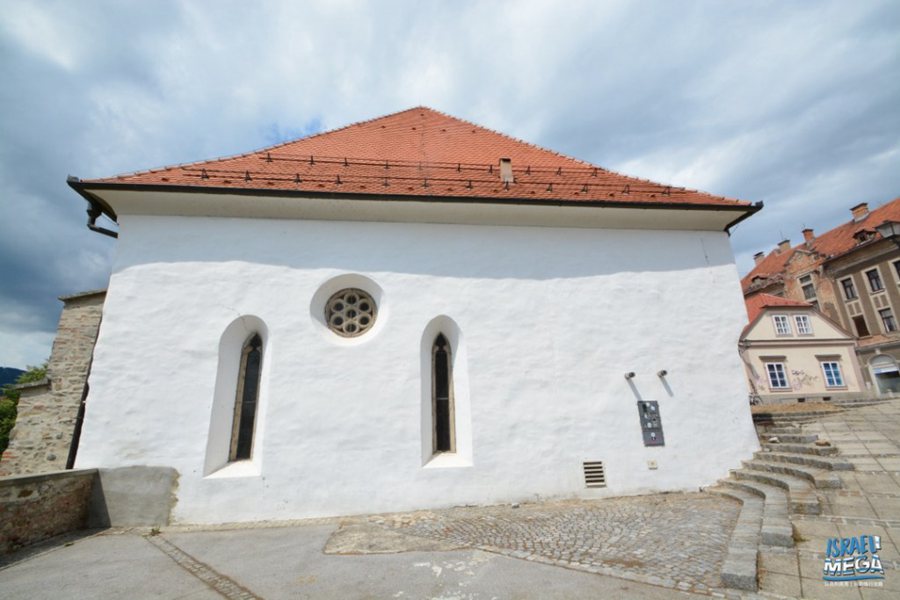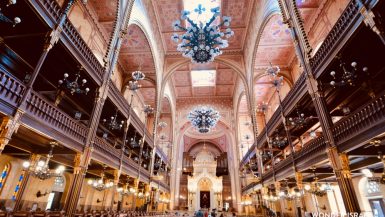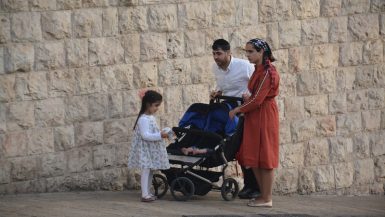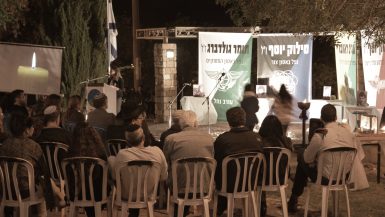Slovenia, one of the former Yugoslavian countries. Next to Italy Croatia, Austria and Hungary, this country has a more elegant flair than Slovakia! If you drive from Austria to Croatia, you’ll naturally pass by this small town called Maribor.

The small town doesn’t receive many tourists. Only locals. It’s a laid back place.
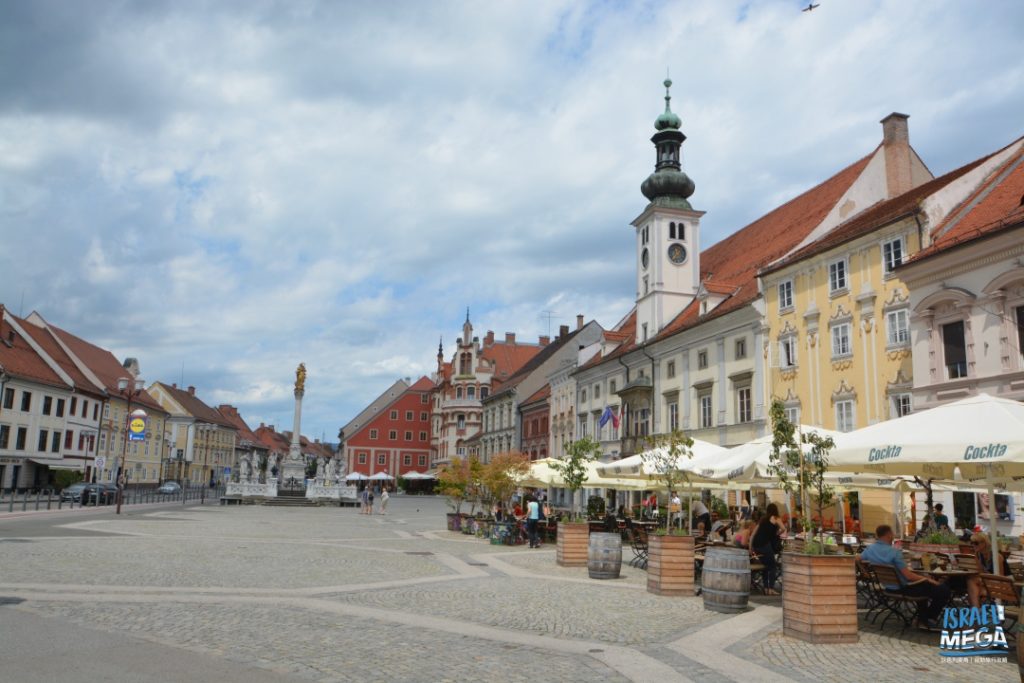
We joined the locals in having coffee near the Water Gate.
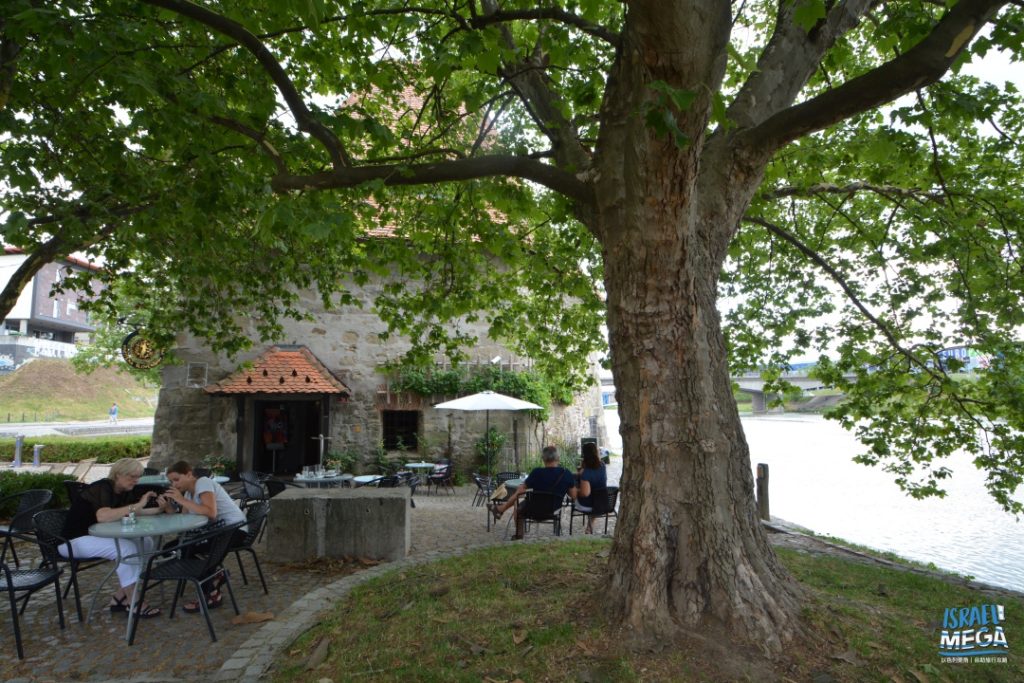
Cappuccino with chocolate and water for 1.7 euro! And this was in a prime location by Drava River. Swans could be spotted from here. But we didn’t come to Maribor for this.
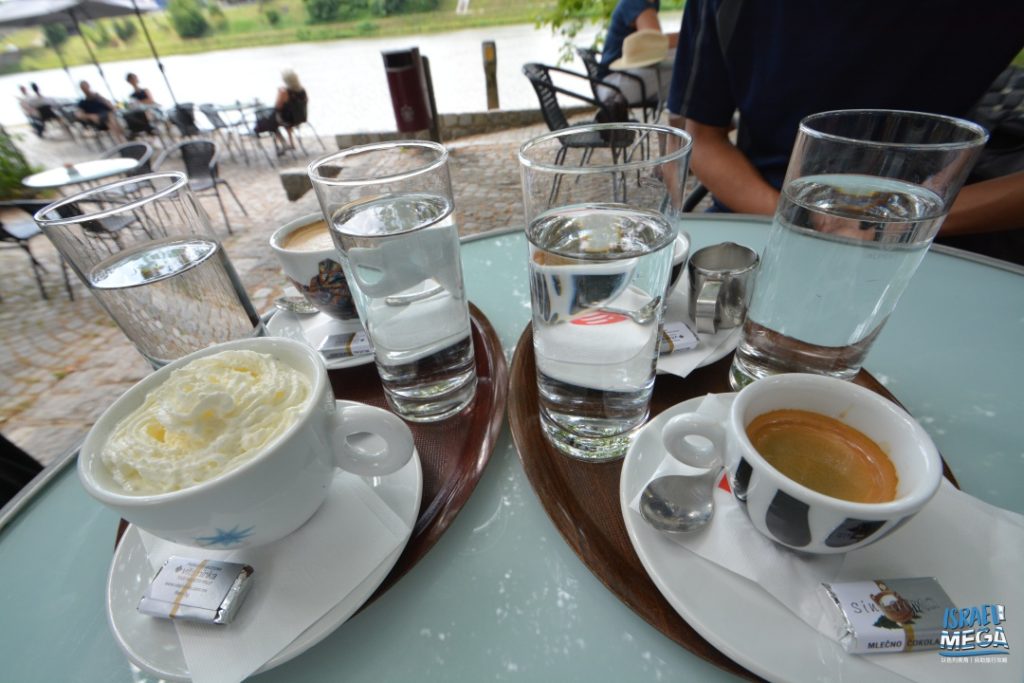
It’s this building close to Water Gate- Maribor Synagogue! A synagogue where there’s no longer a Jew.
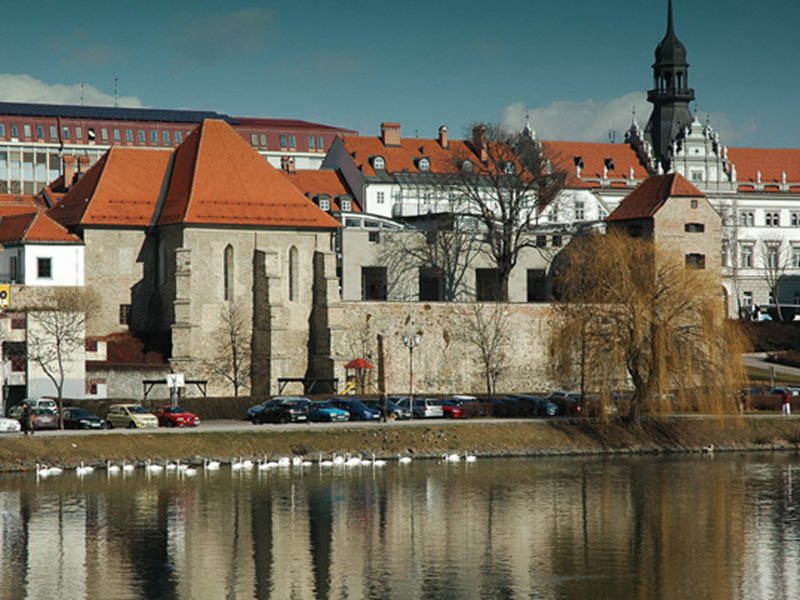
From the cafe, the synagogue looks like this. The one in the middle with one white wall!

The entrance is from the other side. And this is what the synagogue looks like from outside. Well, is this the right place? It’s hard to tell! But there was a note left for the visitor.
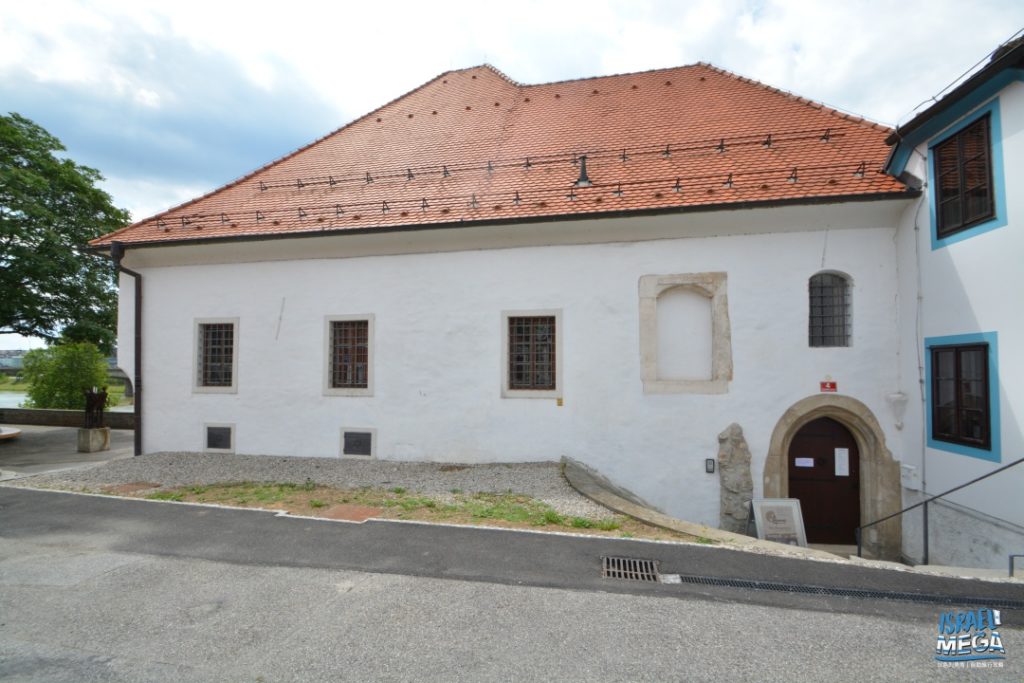
The door was locked from inside. I followed the instruction and knocked with a heavy doorknob. And suddenly, the synagogue came back to life! I heard footsteps in haste. And in 2 seconds, the door opened. A gentleman greeted us.

A young creator who spoke English. He seemed more excited than us (who looked confused), and it felt like he was alone here for a long time. Later he told us that it is true that he receives only a handful of visitors a week, with exception of having groups from Israel.

This was a synagogue. You can tell by seeing a cavity in the wall, where the ark of the Torah was kept. You could read information about this place from the standees, or the curator would be happy to explain the history and answer questions for you.
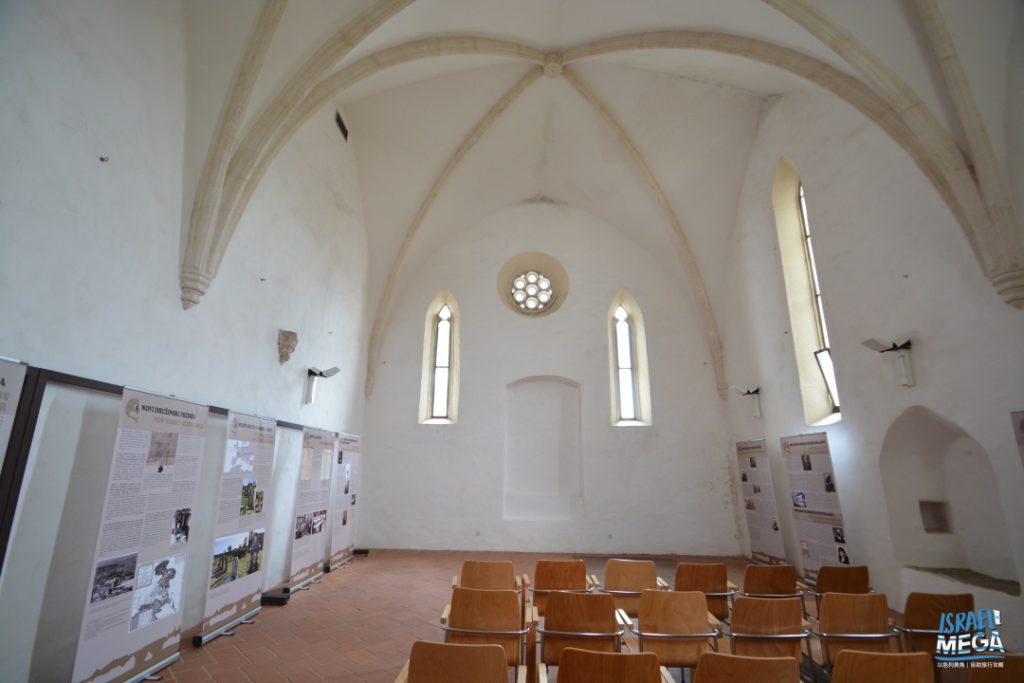
The Jews came to Maribor in the 13th century. They lived in the south-eastern part of the town and played an important role in commerce. There were 300 Jews living in Maribor in the 14th century.
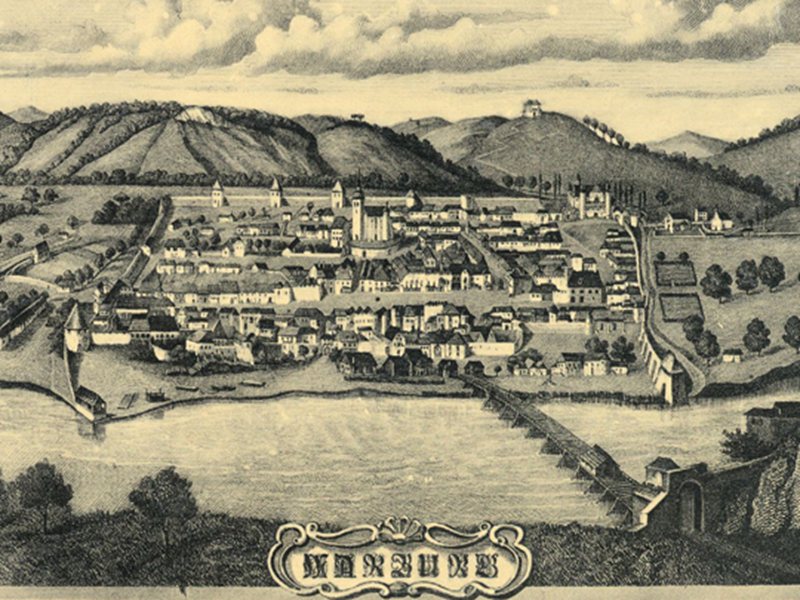
This synagogue was built in that era. A mikveh could be found beneath. Jewish cemetery, rabbi’s home, and yeshiva were all around. There was a community here.
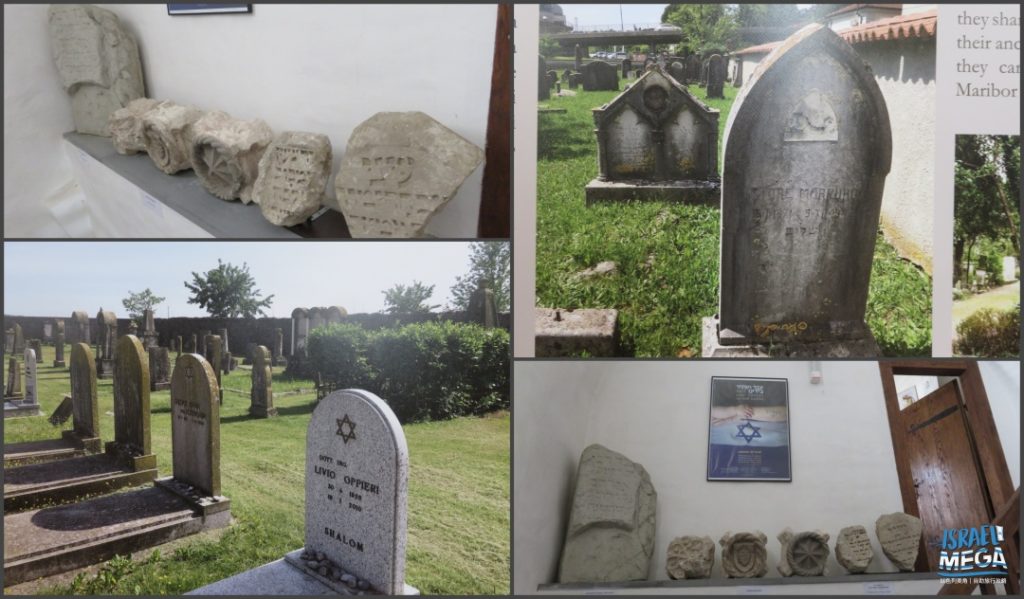
The defensive wall is called “Jewish tower” (Židovski stolp ) because Jews lived here.
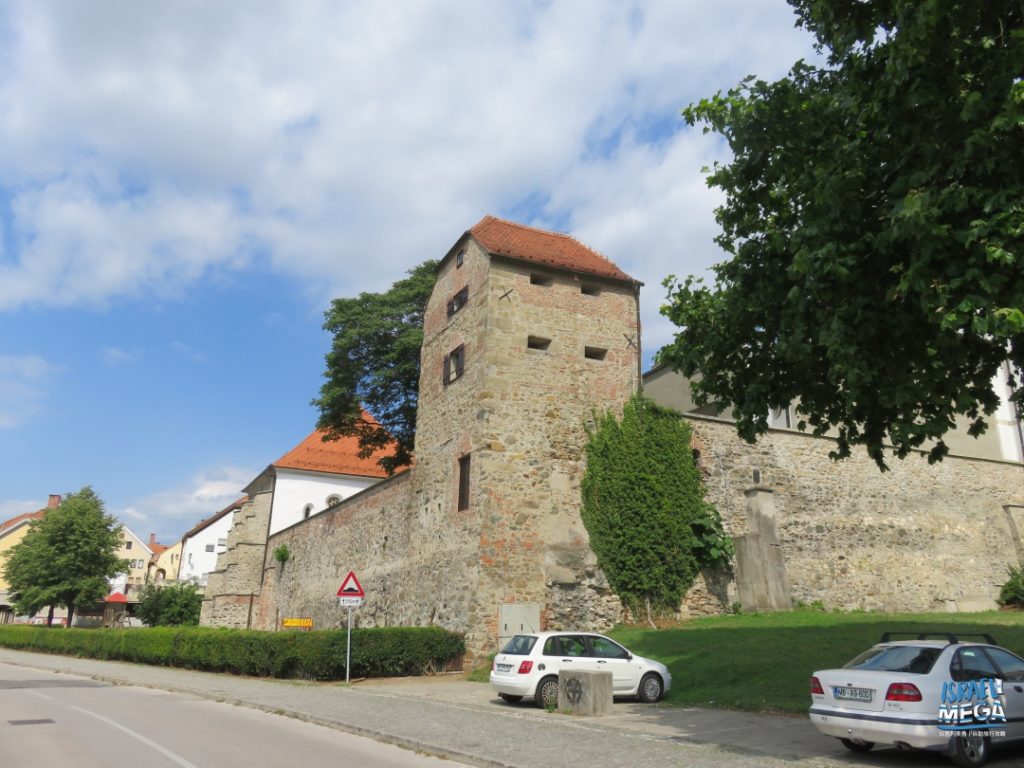
Because of the Black Death and the death of Christian children, the local people took Jews as the scapegoat of all these problems. Also, Christians became allowed to be in money lending business too, so Jews were viewed as their competitors. In 1496, Roman Emperor Maximilian I ordered to expel all Jews from Styria in southeastern Austria. Maribor in Slovenia today was Styria, so Jews here were expelled and they never returned.
The Jewish surname Morpurgo, Marpurg, Marburg, Morpurgo came from Maribor. So if you ever meet someone with the last name similar to the pronunciation of Maribor, then you know where his or her ancestor is from.
In 1501, the synagogue was converted into a Catholic church called the Church of All Saints (Cerkev Vseh Svetnikov).
In 1785, Joseph II, the son of Maria Teresa, confiscated the church and converted it into a military warehouse until it was sold and turned into a private apartment in 1811 (nice view for an apartment from here!). Joseph II had a very different policy toward Jews. He treated the Jews equally and allowed them to live freely.
Therefore, the Jewish community in Maribor emerged again. Although the number did not exceed 100, they were successful in commerce and finances. Some worked in the court, called court jewels (hofjuden). They were doing well as middle class. But these Jews were not the ones who had been driven away, these were Jews from the Czech. And because they did not have a synagogue, the community sense was not strong.
But because of anti-Semitic policies in Yugoslavia, most Jews had already immigrated and only 5,000 Jews or more remained before the start of WWII. In 1941, Slovenia was divided by Hungary, Germany, and Italy. Jews here were captured by the Nazis and sent to concentration camps in the north of Italy or in Germany. Most of the surviving Jews chose to immigrate to Israel. In short, there is no Jew in this town.
We can even say, after WWII, there is no Jew remained in Slovenia (even if there’s one, he or she doesn’t want to claim his Jewish origin or heritage).
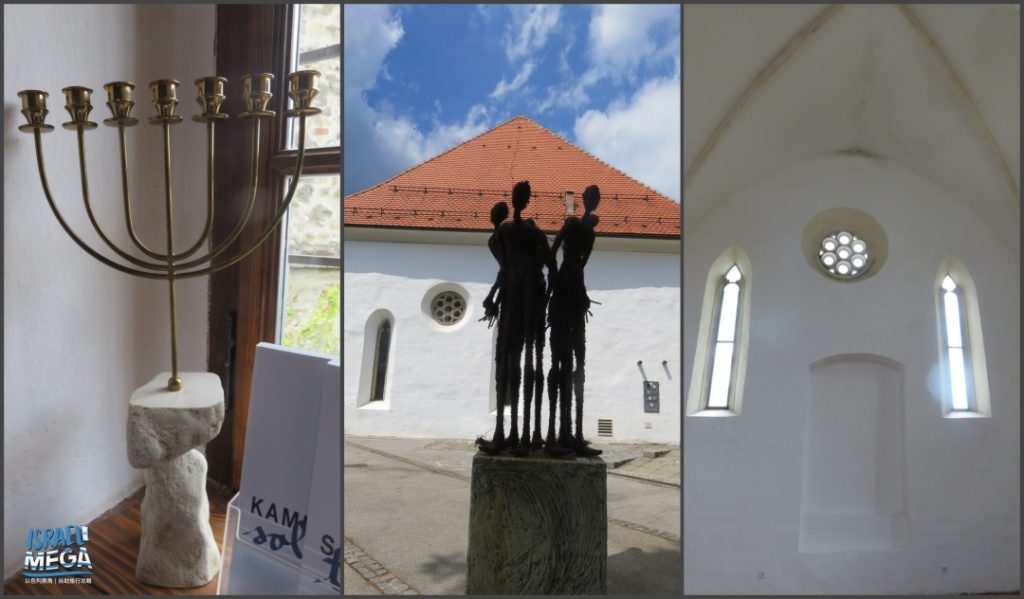
This synagogue was converted into a church, warehouse and then an apartment. Then it became a property of the municipality in 1980, and then it was used as a gallery. Finally, in 2001 it was turned to a small museum like this to preserve Jewish culture and history.
“If there are Jews in the city, this hall should be returned to them, but no Jews live here anymore.”
The curator told me this while handing me a receipt for the entrance fee. 1 euro per head.

“There’s no Jews in Slovenia now ?” I asked.
“Maybe there are 20-30 Jews in the capital Ljubljana, but no one knows where they are. If Jews from abroad come here, they need to go to Trieste for shabbat because there’s no Jewish community in this country, as far as I know. “
So I wanted to know that this country’s attitude is towards Jews now. There once were Jews among them, but none remained after the Holocaust. He thought for a moment and confessed to me frankly:
“There is no opinion towards Jews. This history is too far away from us. From knowledge we know Jews lived here. But now if you talk about Jews, people will think about Jews in Israel. Then opinions towards Jews would vary.”
What the curator didn’t mention that the wall of this synagogue was vandalized in 2009 when Israeli-Palestinian conflict broke out in Gaza.
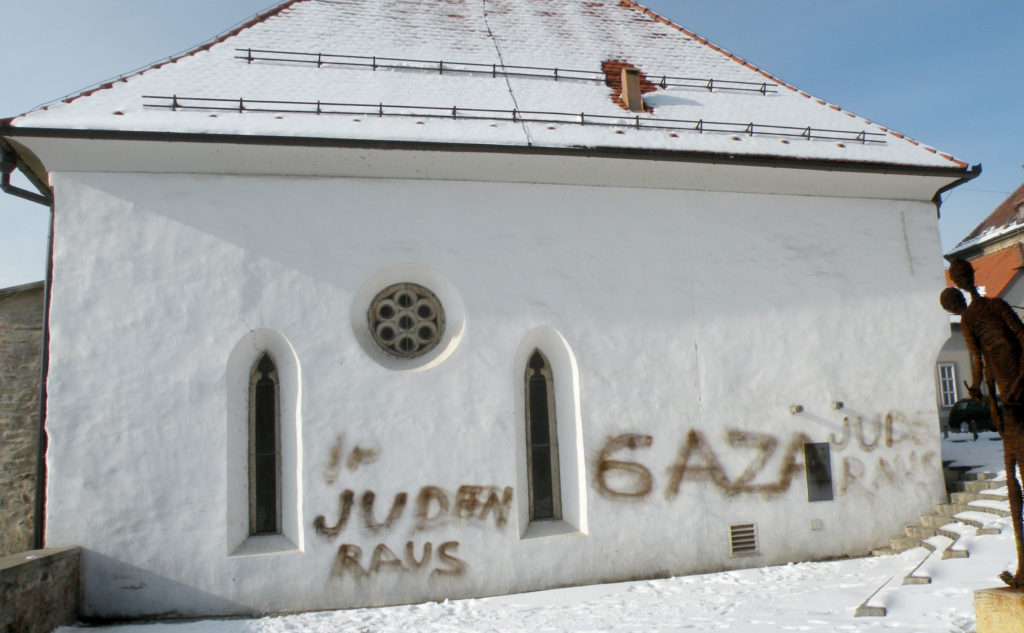
However, I see it a friendly gesture of Maribor municipality to preserve this place as Maribor Synagogue. The monthly visit fee probably won’t even cover this curator’s salary. But this place is here to honor the past.
Although this is a sight that won’t take you more than 5 minutes to see, it left something in my heart. I remember the excitement of the curator and his enthusiasm for sharing history. He wasn’t a Jew. This isn’t his story. But he saw it his mission to tell visitors what happened. Therefore it made me feel this 1 euro was well spent.
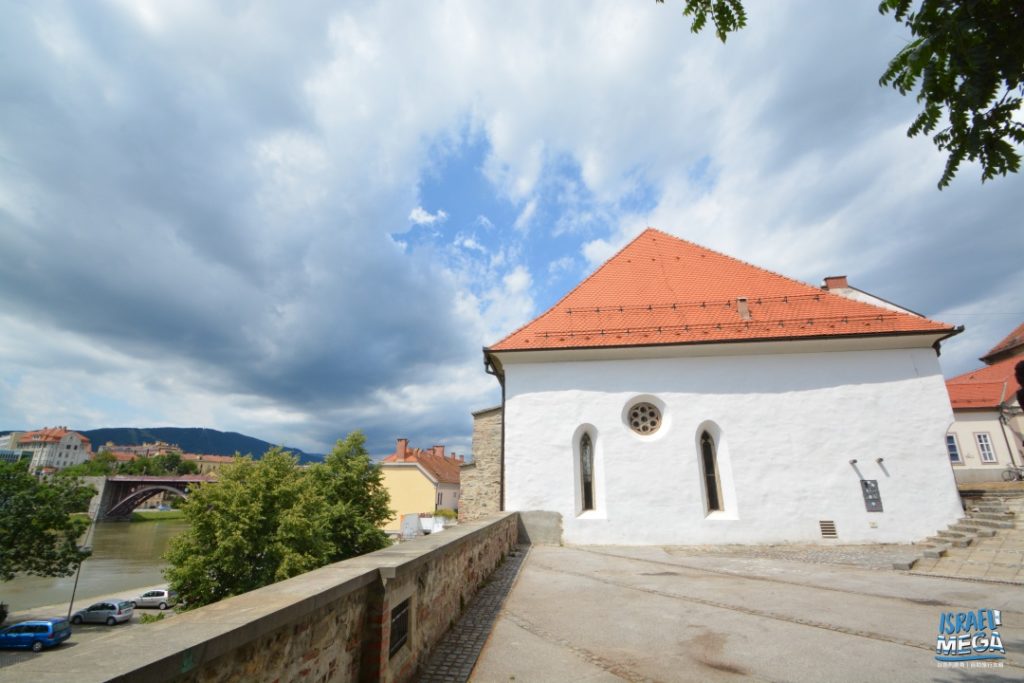
“Taiwan? I don’t think we ever had any visitor from Taiwan!”
He happily put Taiwan down in the statistics. And I was happy too. One more country.
The oldest vine that won Guinness award is here in Maribor. I was still pondering the significance of visiting this synagogue, and I heard Hebrew.

I think the curator would be happy today to see more visitors.
P.s Later I found the Slovenian Jewish Facebook fan page, it’s still active
There are 7 people from Slovenia who were named as the Righteous among the nations. Their names were: Uroš Žun, Andrej Tumpej, Zora Pičulin, Ivan Breskvar, Franjo Punčuh, Ljubica, and Ivan Župančič
Travel Tips
1. You cannot reach this place from the riverside. You must get into the town center first then go there from the town center.

References
http://en.academic.ru/dic.nsf/enwiki/9499493


